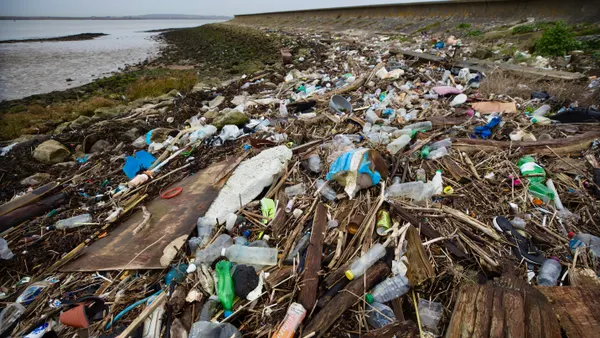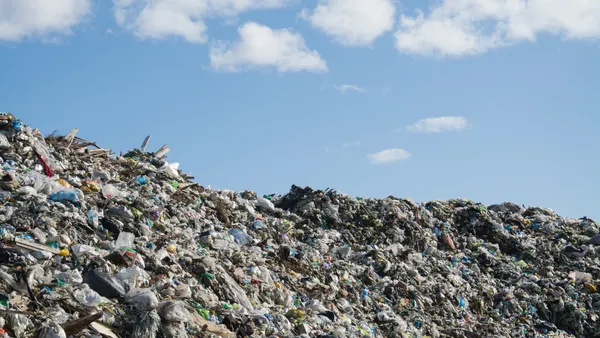Dive Brief:
- The U.S. EPA proposed national drinking water standards for six types of PFAS on Tuesday, expanding its list past PFOA and PFOS, the two types it originally promised to regulate under the Safe Drinking Water Act.
- The proposed rule sets a limit of 4 parts per trillion for PFOS and PFOA, saying the chemicals should be regulated at the lowest reliably measurable level because they are likely carcinogens. The EPA now also calls for limiting four other PFAS — PFHxS, GenX chemicals, PFNA and PFBS — if their combined levels pose a risk based on a separate hazard calculation.
- After undergoing a public comment period, the final rule could be enacted by the end of the year “so we can put it into action as soon as possible,” said Administrator Michael Regan during an announcement event. The EPA has also proposed designating PFOA and PFOS as hazardous substances under the Superfund law, which EPA has said could be finalized later this year.
Dive Insight:
The waste industry has anticipated drinking water standards for PFOA and PFOS since EPA announced it in its PFAS Roadmap in 2021. These rules on per- and polyfluoroalkyl substances may become important in how facilities monitor or handle PFAS-containing material such as leachate, which is typically treated at wastewater treatment plants. Some waste facilities are beginning to build on-site facilities to treat it. The proposed standards could also have ripple effects on water management from organics operations.
The proposed regulations set legally enforceable drinking water standards and would require public water systems to monitor for the chemicals. Operators of water systems would also have to notify the public and take steps to reduce contamination if the levels exceed the standard, according to the EPA.
On Tuesday, the EPA affirmed it would set the maximum contaminant level of 4 ppt, saying in a fact sheet that “there is no level of these contaminants that is without a risk of adverse health effects.”
The other four PFAS listed in the rule would be measured as a group, with regulations kicking in when one or more of the chemicals combine to reach a certain threshold outlined in the EPA’s hazard index.
“We anticipate that when fully implemented, this rule will prevent thousands of deaths and reduce tens of thousands of serious PFAS-related illnesses,” Regan said during the rule announcement event on Tuesday.
PFAS, also known as “forever chemicals,” can be found in many common items from nonstick pans to rain gear and some packaging.
Trade groups such as the National Waste & Recycling Association and the Solid Waste Association of North America have said future PFAS regulations could be costly and ramp up liability concerns. The industry also sees PFAS management as a possible business opportunity. SWANA declined to comment on the EPA’s propopsed standards, and NWRA has not yet responded to a request for comment before publication on Tuesday.
The American Chemistry Council said it supports drinking water standards for PFOA and PFOS “based on the best available science,” but they added in a statement that they have “serious concerns” with how the EPA determined the maximum contaminant levels for the two chemicals, calling the approach “overly conservative.”
Scott Faber, senior vice president for government affairs at the Environmental Working Group, applauded the EPA rulemaking as “historic progress” toward curbing PFAS contamination in water. EWG had recently criticized the EPA for not meeting key deadlines to set PFAS standards.
“The EPA’s proposed limits also serve as a stark reminder of just how toxic these chemicals are to human health at very low levels,” Faber said in an emailed statement.
A March report from the National Science and Technology Council describes available methods for PFAS removal and destruction, along with likely sources of environmental exposure.
The EPA has not yet offered new guidance on how to destroy or dispose of PFAS-containing material, but it reiterated that it is doing further research and plans to update guidance later in the year. In the meantime, the agency referred back to its interim guidance document, which describes the options of landfilling, deep well injection and thermal treatment.











